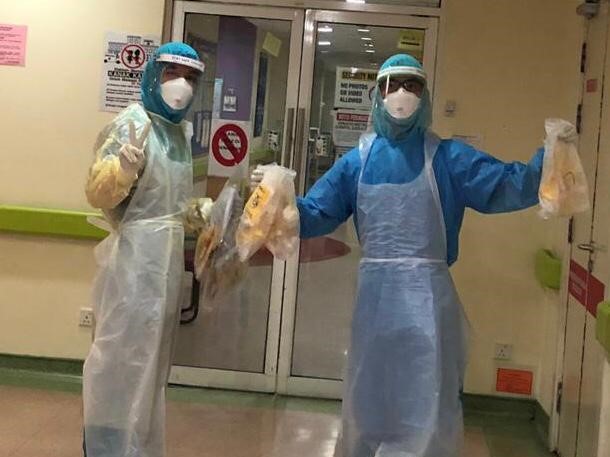KUALA LUMPUR, Dec 10 – The number of permanent health care workers in Malaysia has been steadily increasing from 149,031 workers in 2010 to 214,534 in 2021, with an average 36 per cent annual rise in the past 11 years.
Health Minister Khairy Jamaluddin, in a written reply in Parliament on December 8, 2021, stated that the number of permanent health care workers under the Ministry of Health (MOH) by year from 2010 until September 2021 were as follows:
- 2010 – 149,031
- 2011 – 158,655 (+6.46%)
- 2012 – 171,781 (+8.27%)
- 2013 – 187,059 (+8.89%)
- 2014 – 198,021 (+5.53%)
- 2015 – 205,007 (+3.53%)
- 2016 – 213,022 (+3.91%)
- 2017 – 210,692 (-1.09%)
- 2018 – 208,156 (-1.2%)
- 2019 – 211,998 (+1.85%)
- 2020 – 211,831 (-0.08%)
- 2021 (until September) – 214,534 (+1.28%)
Most years saw increases with the exception of 2017, 2018, and 2020, which reported some minimal declines in the number of permanent health care workers under MOH. It is also interesting to note that the annual percentage increase in permanent health care workers has been lesser in recent years, falling from 6.46 per cent in 2011 to 1.28 per cent as of September this year.
Khairy offered the statistics in response to Bukit Mertajam MP Sim Chee Keong’s request for data on the number of permanent health care workers by work category, state, gender, and year from 2010 to date.
By state, Selangor had the highest number of permanent health care staff at 25,486 workers, as of September this year, followed by Sabah with 22,204 permanent workers, Sarawak (20,200), Perak (19,593), Johor (19,567), Kedah (13,586), Pahang (13,127), Kelantan (11,937), Penang (10,896), Terengganu (9,983), Negeri Sembilan (9,532), Melaka (6,998), the Federal Territories of Kuala Lumpur and Putrajaya (6,035), Perlis (2,952), and Labuan (748).
Additionally, there were 19,095 permanent health care workers stationed at MOH’s headquarters and institutes, colleges, labs, as well as at Kuala Lumpur Hospital and Tunku Azizah Hospital. Cadre MOH employees to other agencies amounted to another 2,595 permanent workers.
By work category, the number of permanent staff until September 30, 2021, were:
- Medical officers, including specialists – 33,214
- Dental officers, including specialists – 4,181
- Pharmacy officers – 8,475
- Assistant medical officers – 14,510
- Nurses – 66,465
The limited number of permanent health care workers that the MOH can absorb each year has led to rising discontentment among contract workers who also face discrimination in wages, benefits like allowances and tax reductions, as well as leave, in addition to being ineligible for a federal study grant to pursue a local master’s programme.
While MOH’s 2022 budget of RM32.4 billion is the second largest among ministries, a total of RM28.03 billion is for MOH’s operating expenditure, which means that staffing costs make up more than half of the ministry’s overall budget.contrac
Khairy previously told Parliament that the Cabinet had decided on July 14 to offer a two-year contract extension to medical officers who completed their two-year compulsory service.
As such, under Budget 2022, the government announced that the contracts of 10,583 medical, dental, and pharmacy officers would be extended. RM100 million has also been allocated to sponsor specialist training for 3,000 contract doctors and dentists.







